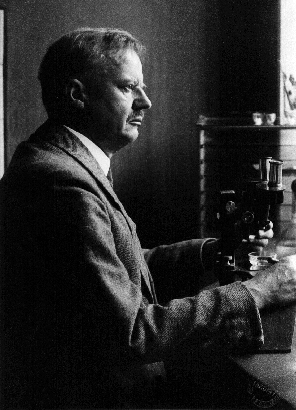 Hans Spemann was born on June 27, 1869, in Stuttgart Germany. Spemann's name will always be associated with the work he did on
experimental embryology. He made himself a master of micro-surgical technique. In 1924, while working on the relatively large eggs
of amphibians he discovered, together with Hilde Mangold, the existence of an area in the embryo, the portions of which, upon
transplantation into a different part of a second embryo ,induced the secondary embryonic primordia. The name "organizer centre"
or "organizer" was given by him to those parts. For this discovery of the organizer effect in embryonic development, he was awarded
the Nobel Prize in 1935.
Hans Spemann was born on June 27, 1869, in Stuttgart Germany. Spemann's name will always be associated with the work he did on
experimental embryology. He made himself a master of micro-surgical technique. In 1924, while working on the relatively large eggs
of amphibians he discovered, together with Hilde Mangold, the existence of an area in the embryo, the portions of which, upon
transplantation into a different part of a second embryo ,induced the secondary embryonic primordia. The name "organizer centre"
or "organizer" was given by him to those parts. For this discovery of the organizer effect in embryonic development, he was awarded
the Nobel Prize in 1935.
Later Spemann showed that different parts of the organization centre produced different parts of the embryo. The anterior parts of it tend to produce parts of the head, and the posterior parts of it parts of the tail. Further, tail organizers, when they are grafted into the head region of another embryo, may produce heads instead of tails, the reason being that they are influenced by the head organizer in their new environment.
Earlier Spemann had transplanted the optic cups of new embryos into the outermost layer of the region of the abdomen and had found that they induced the production, in this new situation, of a lens of the eye. This was interpreted as being evidence of the existence of secondary organizers which operate after the induction exerted by the primary organizer has been completed.
By these and other experiments of a similar kind Spemann laid the foundations of the theory of embryonic induction by organizers, which led later to biochemical studies of this process and the ultimate development of the modern science of experimental morphogenesis. He described his researches in his book Embryonic Development and Induction (1938). Spemann died in Freiburg Germany, on September 9, 1941.